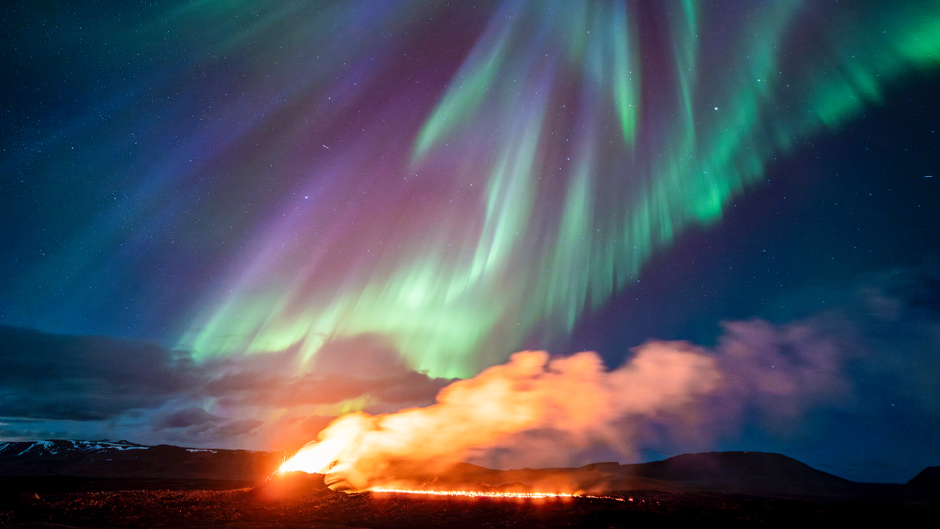Newswise — Beneath an island named for ice flows some of the hottest rivers of all.
Iceland, home to some of the largest glaciers in Europe, sits atop a volcanic hot spot, with magma regularly breaching the surface, creating long, narrow fissures that spew lava, ash, and smoke.
“It’s a geological wonder on steroids,” Falk Amelung, a professor of marine geosciences at the University of Miami Rosenstiel School of Marine, Atmospheric, and Earth Science, said of the land of fire and ice, which boasts some 32 active volcanoes. “It is part of the mid-Atlantic ridge, which is a massive crack located on the ocean floor caused by the separation of the North American and Eurasian tectonic plates. When those plates pull apart, new magma rises, and that’s what triggers volcanic activity.”
A series of eruptions has rocked the island nation’s Reykjanes Peninsula since 2021, when volcanoes that had been dormant for almost 800 years suddenly roared to life, spitting out steam and lava.
Since late 2023, the eruptions have been especially frequent. Only days ago, the Icelandic Meteorological Office issued lava warnings, reporting that more volcanic activity near the Sundhnúkur area may be imminent.
Could climate change be contributing to the increase in Iceland’s volcanic activity?
Amelung believes so.
“There are two mechanisms at work,” the marine geoscientist said. “Large parts of Iceland were covered by ice caps. When they melt, there is less pressure on the magma chamber. So, for the magma it is easier to break the rock and travel to the Earth’s surface. This has caused the increase in volcanic activity in central Iceland in the past two decades.
“The other mechanism,” he continued, “is that hot rock melts when the overburden pressure reduces. This can be achieved by upward movement of the rock mass, which is the typical melt generation mechanism at hot spot volcanic systems, or directly by the melting of an overlying ice cap.”
Amelung is quite familiar with Iceland’s volcanology, having visited the island to use data from satellite-measured ground uplift to study its retreating ice caps.
He continues to be enthralled by its geology and the way in which climate affects it.
“Geologically speaking, it’s an amazing place, not only because of its tectonics but also because of the glaciers that respond rapidly to changes in the climate,” Amelung said. “During cold periods lasting a few hundreds of years, winter sea ice develops, temperatures drop dramatically, and Iceland freezes over and develops an ice sheet. There have been several little ice ages in the recent geological history when Iceland was partially or fully glaciated. And the glaciations are associated with changes in the ground surface elevation. When Iceland is covered by an ice sheet, the weight presses the ground down by up to 500 meters.”
Currently, Iceland’s Vatnajökull ice cap, which is the largest glacier in Europe, loses about 1 meter of ice per year. As a result, the ground is uplifting by 2 to 3 centimeters annually, according to Amelung. “And when the ice melts, volcanic activity increases,” he said.
Amelung recently taught a class on the geology of the Galápagos Islands as part of the Rosenstiel School’s UGalapagos program for undergraduates, comparing for students the similarities and differences between the volcanology of that famous archipelago and that of Iceland.
“They are both oceanic hot spot volcanic systems where the melt is generated by upwelling material in the Earth’s mantle,” he said. “But Iceland is sitting on a divergent plate boundary where new crust is generated as two tectonic plates move apart, which makes it easy for magma to escape to the Earth’s surface. In contrast, under the Galápagos volcanoes, the magma is accumulating in big magma chambers and the volcanoes erupt once the pressure in the chamber is high enough to rupture the surrounding rock.”
Amelung noted that the volcanism on both islands is of a basaltic nature. “The magmas are very hot and flow readily because they have low viscosity,” he said. “Therefore, the eruptions are not violently explosive. But the large lava flows can destroy property as we have seen in Iceland.”

